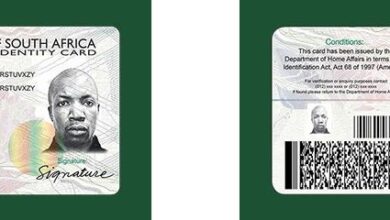2024 TIPS:HOW TO SAVE MONEY

Sometimes the hardest thing about saving money is just getting started. This step-by-step guide can help you develop a simple and realistic strategy, tips, so that you can save for all your short- and long-term goals. Record your expenses The first step to start saving money is figuring out how much you spend.
TIPS, Keep track of all your expenses—that means every coffee, household item and cash tip as well as regular monthly bills. Record your expenses however is easiest for you—a pencil and paper, a simple spreadsheet or a free online spending tracker or app. Once you have your data, organize the numbers by categories, such as gas, groceries and mortgage, and total each amount.
Use your credit card and bank statements Include saving in your budget Now that you know what you spend in a month, you can begin to create a budget. Your budget should show what your expenses are relative to your income, tips, so that you can plan your spending and limit overspending. Be sure to factor in expenses that occur regularly but not every month, such as car maintenance. Include a savings category in your budget and aim to save an amount that initially feels comfortable to you.

Saving money can often feel like an uphill battle, especially when you’re just starting out. However, with a little bit of planning and persistence, it’s an achievable goal that can have a significant impact on your financial well-being. tips, This comprehensive step-by-step guide is designed to help you develop a simple and realistic strategy for saving, no matter what your financial situation may be. The first crucial step in the savings journey is to record your expenses. tips
Table of Contents
This means tracking every single expense, from your morning coffee to your monthly rent or mortgage payment. By keeping a detailed record of where your money is going, you’ll gain valuable insights into your spending habits, which is essential for creating an effective savings plan. You can use a variety of tools to record your expenses, such as a pen and paper, a simple spreadsheet, or a free online spending tracker or app. tips
TIPS Once you have a complete picture of your expenses, organize them into categories like gas, groceries, and utilities, and calculate the total amount spent in each area. With your expense data in hand, you can now begin to create a personalized budget. Your budget should outline your income alongside your expenses, allowing you to see where you can cut back on spending and prioritize saving. Remember to factor in occasional expenses, tips such as car maintenance or home repairs, that may not occur every month but can significantly impact your finances.
tips, Crucially, be sure to include a savings category in your budget, and set a goal that feels achievable and comfortable for you. Whether it’s setting aside a fixed amount each month or a percentage of your income, the key is to make saving a consistent habit. By following these steps, you’ll be well on your way to developing a simple, yet effective, savings strategy. With a clear understanding of your expenses and a personalized budget that includes savings, you’ll be able to work towards your short-term and long-term financial goals with confidence and clarity.

So, take the first step and start recording your expenses today – your future self will thank you. on eventually increasing your savings by up to 15 to 20 percent of your income. Saving money is a crucial aspect of financial planning, tips, and it’s essential to strive for long-term financial stability and security. By gradually increasing your savings over time, you can significantly improve your financial well-being and prepare for future expenses, emergencies, or retirement.
Aiming to increase your savings by 15 to 20 percent of your income is a reasonable and attainable goal for many individuals. This range provides a balance between saving a substantial portion of your income and still maintaining a comfortable standard of living. The specific percentage that works best for you will depend on your income, expenses, and financial goals. To achieve this target, you can start by creating a budget that allocates a portion of your income towards savings.
TIPS, Begin with a lower percentage, such as 5 or 10 percent, and gradually increase it over time as your financial situation allows. This incremental approach can help you adjust your spending habits and ensure that the increased savings don’t significantly impact your day-to-day lifestyle. tips Additionally, you can explore various savings strategies, such as automating your transfers to a dedicated savings account, taking advantage of employer-sponsored retirement plans with matching contributions, or finding ways to reduce unnecessary expenses.

TIPS, By consistently implementing these strategies, you can work towards increasing your savings and building a stronger financial foundation for the future. Remember, the journey to increasing your savings is a gradual process, and it’s essential to be patient and persistent. By taking small, consistent steps, you can eventually achieve your savings goals and enjoy the peace of mind that comes with financial security.






